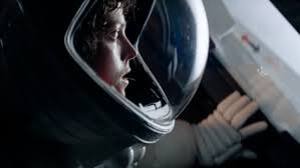Alien

Marking the end of the 1970s, a period celebrated for its innovative and experimental approach to filmmaking, 1979 represented a pivotal moment in cinema history. The decade had seen the consolidation of auteur-driven cinema, recognizing directors as the primary creative force behind films. However, its final year would solidify the rise of blockbuster filmmaking, with studios increasingly investing in high-concept movies that could appeal to broad audiences globally.
The year would also feature films with a strong focus on character-driven stories, exploring complex themes dealing with personal identity and social anxieties. In short, 1979 is often viewed as a bridge, between the creative freedom of the 1970s and the more commercially oriented 1980s. These films would leave an indelible mark, influencing genres, storytelling techniques, and the business of cinema itself.
Woody Allen’s romantic “Manhattan” and Monty Python’s irreverent “Life of Brian” both premiered, pairing their creator’s previous comedy classics with essential companion pieces. Internationally, Andrei Tarkovsky’s feral and profound “Stalker”, his sci-fi follow up to the brilliant “Solaris” from 1972, also debuted in its home country of the Soviet Union, subtly influencing genre style and design in Hollywood blockbusters to come. And capping the year in its final weeks, Robert Benton’s timely “Kramer vs. Kramer” portrayed bitter divorce and personal growth with sincerity and sensitivity, topping the year’s box office and Best Picture race.
In addition to these indispensable motion pictures, the decade-end also included the return of its most successful artist, Francis Ford Coppola. Two years earlier, fellow auteurs William Friedkin and Martin Scorsese had followed their back-to-back successes with their most ambitious projects to date and failed to connect with audiences and critics. Steven Spielberg attempted the same target, aiming for his three-peat in December with the opening of his comedy spectacular “1941”, and missed the mark.
Against this backdrop, Coppola’s “Apocalypse Now” became the cinematic cautionary tale that stood above all the others. Bleeding millions of dollars as numerous natural and medical calamities injected themselves into his magnum opus, the production would film for over a year, more than double its original budget, and send the press machine into overdrive with tales of excess and waste deep in the heart of the Philippines. Coppola had invested every asset he owned, called in every favor he could pull, and staked his artistic reputation on the completion of the film, all while slowly losing his mind and questioning if what he had captured in this jungle could be edited into a comprehensible vision.
Defying every expectation and all odds, “Apocalypse Now” screened as an in-progress draft at Cannes in May 1979, to thunderous applause and a Palme d’Or victory (Coppola’s second after “The Conversation”). It was followed by the release of the film to audience enthusiasm and critical praise in August. Grounded by the magnificent central performance of Martin Sheen, as well as mesmerizing supporting turns by Marlon Brando and Robert Duvall, the film powerfully conveys the horrors and absurdities of war through its intense visuals and haunting narrative.
Led by Coppola’s masterful direction and John Milius’ complex characters, the film’s exploration of the darkness within humanity and the collapse of moral boundaries resonated deeply, reflecting individual and collective disintegration and creating a profound commentary on the effect of conflict and the fragility of sanity. With its box office more than doubling its massive budget and a Best Picture Oscar nomination, Coppola had amazingly continued his flawless cinematic streak. Eight impactful years, four prestigious films, one incomparable director.
With a fraction of the budget of “Apocalypse Now” and significantly less pre-release discussion, Ridley Scott’s sci-fi horror film “Alien” was awaited by summer moviegoers with mild expectations. Coming from a relatively unknown director and with a cast that lacked major stars at the time, its performance was viewed as a gamble. However, intriguing marketing (highlighted by the incomparable tagline “In space, no one can hear you scream”) and early-screening buzz generated gradual and growing interest, and genre fans and industry insiders began to anticipate something potentially groundbreaking.
Released wide the same June weekend as “Jaws” four years earlier, the impact of “Alien” on the summer audience was immediate and undeniable. Revolutionizing the sci-fi and horror genres by blending them into a terrifying and atmospheric experience, it set a new standard for creature design and grotesque effects. The thrill was visceral and offered genre fans a distinctly grittier option to the recent output from Steven Spielberg and George Lucas.
The tone is set from the beginning, as the establishing shots of an unknown space carrier lingers on the dirt and grime coating its interior, with the first signs of life coming only after the crew is awakened from their hibernation and share a meal and conversation that is layered with realism and authenticity. The use of character actors and their blue-collar demeanor work to heighten the fantastical elements when they appear, notably during the team’s last dinner together, featuring one of cinema’s all time jump scares. From here, the movie breaks toward horror, as each character fights for their own survival, including the alien visitor themself.
Watching the film with fresh eyes, there is little to indicate that Ripley, an initially lesser-known character played by Sigourney Weaver, would survive while Dallas, the presumed traditional hero played by Tom Skerrit, would meet an early and untimely death. By subverting audience expectations, the final showdown shocked viewers and defied typical movie conventions. In the process, its strong female protagonist redefined gender roles in action films, ultimately contributing to more diverse and complex portrayals of women in genre cinema.
“Alien” redefined the pacing of horror films, using slow-burn tension and claustrophobic environments to create a sense of dread that was groundbreaking for its time. Its innovative use of practical effects set a new bar for realism in the depiction of monsters on the big screen. In the end, its success demonstrated that science fiction could be a commercially viable genre for serious, adult-oriented storytelling, opening the door for other ambitious sci-fi projects to come.

4 thoughts on “Alien”
Pingback: The Terminator - Cinema Thing
Pingback: Dune - Cinema Thing
Pingback: Legend - Cinema Thing
Pingback: Aliens - Cinema Thing